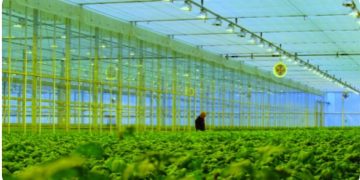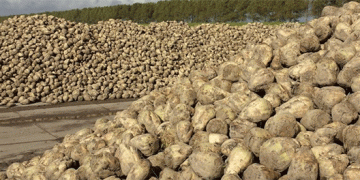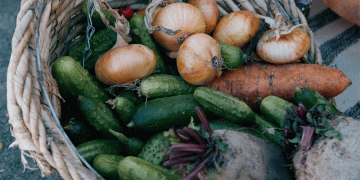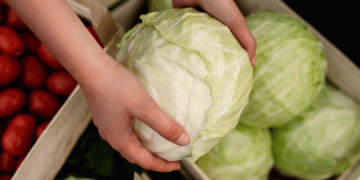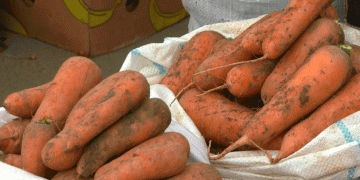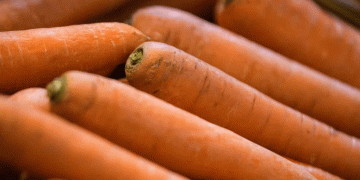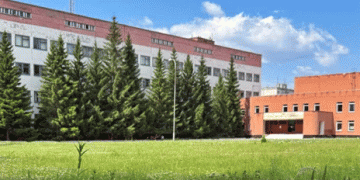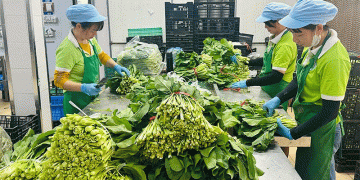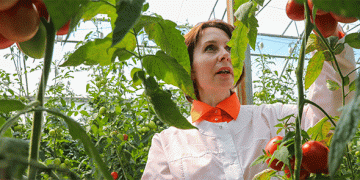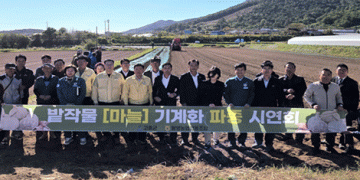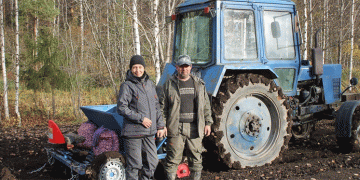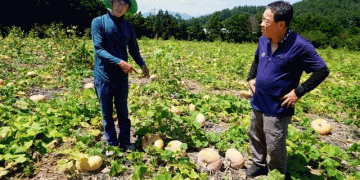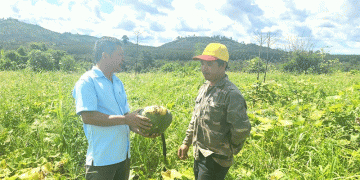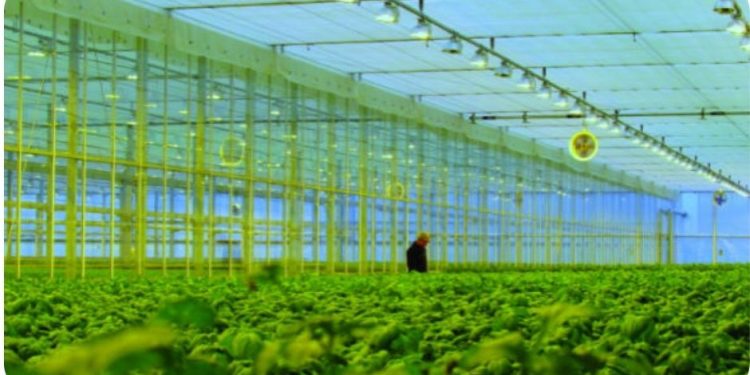In 2011, friends Tim Ryan and John Bonner built a 300-square-foot greenhouse in Burton, Ohio, with the goal to become a local, clean, year-round provider of living lettuces and herbs. The result was Great Lakes Growers, and interest in their products came fast and furious.
“We wanted to reduce food transportation miles (since most produce is now coming from the West Coast), provide cleaner produce than what is done with field-grown products and control the environment in a greenhouse to allow for the most consistent yields,” Ryan said. “Our philosophy is simple: to provide the highest quality, freshest, cleanest product year round in the Great Lakes region. Our products are living, giving them unparalleled shelf life for consumers and restaurant chefs.”
Very quickly, demand outpaced supply and the hydroponic growers decided to expand – first to 3,000 square feet, then 10,000 square feet and now a 60,000-square-foot facility complete with a fully automated NFT (Nutrient Film Technique) system.
“We decided to expand simply due to customer demand … we were completely sold out of our current facility, and while we only increased our total footprint by 50 percent, we doubled our productive capacity because we are now growing herbs in our expansion, which grow faster than lettuce and take up less space,” Ryan said. “We are now able to grow lettuce and herbs with their own respective requirements regarding temperature, nutrients, etc.”
Today, Great Lakes Growers can grow 1.4 million heads of lettuce annually, with enough space available to expand operations to 450,000 square feet and 18 million lettuce heads.
Its largest growth area has been in packaged living lettuce, which provides a two-to-three week shelf life and allows customers in multiple states to purchase the products.
Both consumer demand and an increase in interest from the retail and foodservice industries drove the pair to make this significant investment.
“We are roughly selling 30 percent of product into restaurants and 70 percent into retail/wholesale,” Ryan said. “We are in multiple states throughout the Midwest and use a foodservice supplier for restaurant deliveries. We direct deliver to local retail grocers and have semi-truck deliveries arranged for wholesale customers.”
Getting experience
The pairing of Bonner and Ryan was a perfect fit for the greenhouse.
Bonner was raised on a 30-acre family farm in the area, which had corn, soybeans and greenhouses. His grandmother was the founder of Burton Floral and Garden, the largest horticultural supply distributor in the Midwest. Bonner received a degree in business administration and ran his family’s greenhouse for six years, before starting Great Lakes with his friend.
Also raised in the area, Ryan received a bachelor’s degree in political science and a master’s degree in business administration, and then went on to work more than a dozen years for the Swagelok Co. of Solon, Ohio, honing his business skills.
One of Great Lakes Growers’ biggest investments was in its NFT system, which recirculates a stream of nutrient solution across the plant roots, minimizing water and nutrient waste while allowing high yields from a small footprint. This was something that helped keep the greenhouse profitable from early on.
Still, there’s a learning curve for Ryan and Bonner as they figure out other facets of the business.
“The most important lesson we have learned from growing lettuces and herbs in northeast Ohio is that although we have a state-of-the-art facility, environmental factors still play a major role,” Ryan said. “The amount of natural sunlight we get has a great impact on growth and quality. Even though we can grow high-quality produce year round, the summer months give us better color and production, and figuring out how to replicate this throughout the colder/shorter days of winter will go a long way to helping us be successful.”
For instance, they quickly learned that some varieties of lettuce produce larger, higher quality yields when exposed to different light intensity, while some herbs grow stronger and more quickly with lower humidity levels.
In that regard, Ryan names supplemental lighting as probably the biggest area of opportunity for Great Lakes Growers right now, and they are testing LED and other lighting strategies to help determine how to minimize the effect of shorter days throughout the winter months.
“There’s a constant balance we need to maintain, and our new facilities will allow us to provide that kind of individual attention to our plants, which will ultimately deliver a better product for our customers,” he said. The greenhouse uses no chemical herbicides, which is better for both the body and the environment, Ryan said.
“Because our plants get the optimal amount of water and nutrients, they grow with more consistency and better quality while preserving resources – in a shorter amount of time,” he said. “And since we grow in a climate-controlled facility, everything is in season all year long. Plus, since our produce comes from right here in Ohio instead of being shipped from the Southwest U.S. or Mexico, it’s unbelievably fresh and tasty when it gets to your fork.”
In the future
Ryan is pleased his company can support the local community by providing jobs, and expects that to continue as years go by. Great Lakes Growers has about 15 full-time equivalent associates in the greenhouse and two or three drivers, depending on need. It has added several new employees since the expansion, and will have a need for several more depending on how automation efforts progress.
Looking ahead, Ryan expects Great Lakes Growers to further expand its space and offerings.
“We plan to continue our growth throughout the next three to five years, developing strategies that will enable us to minimize the impact of weather changes,” he said. “We hope to be the single provider of the freshest, most nutritious lettuces and herbs available in the Midwest.”
— Keith Loria, VGN correspondent
